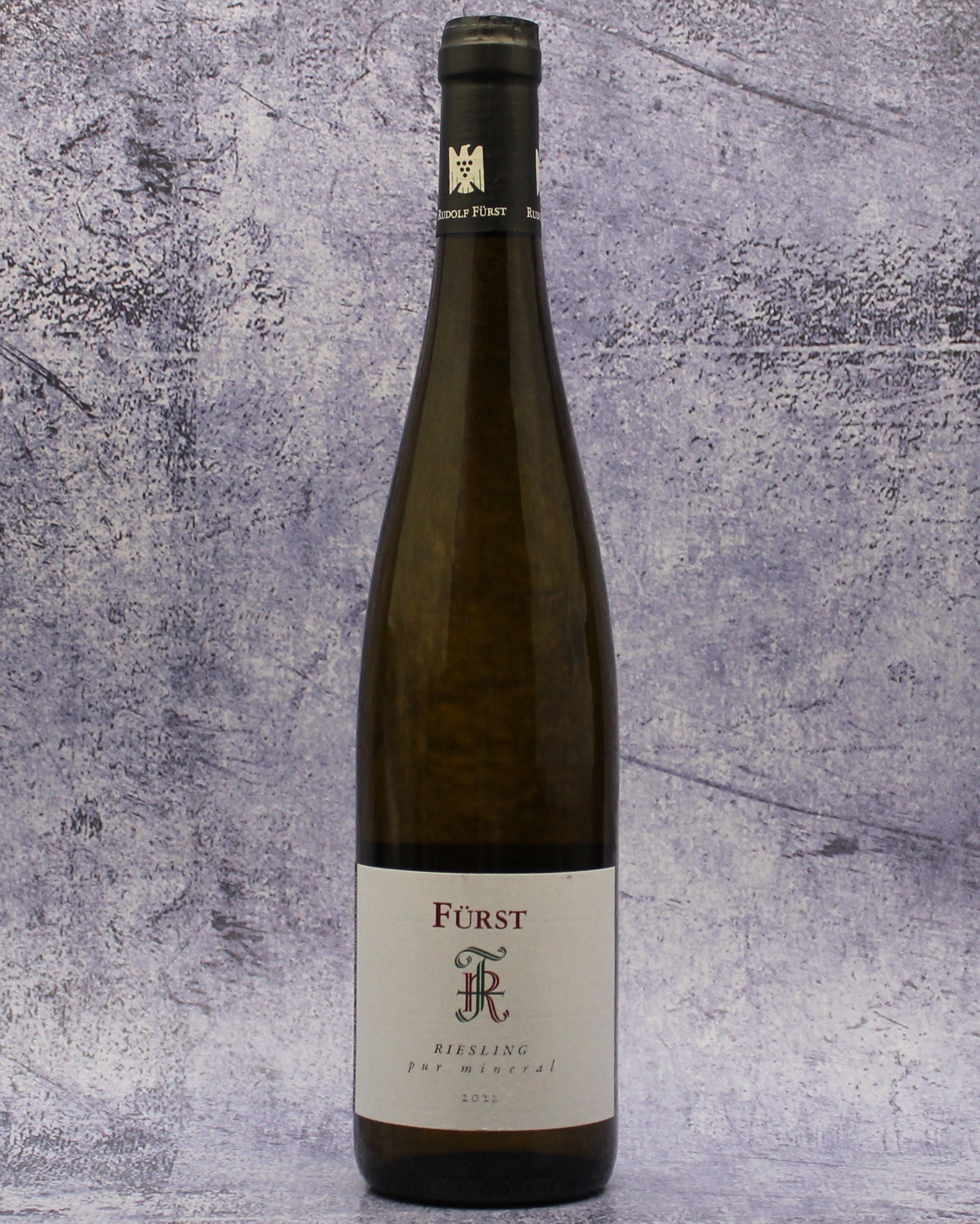Description
From: Bürgstadt, Franken, Germany
Varietal: Riesling
Taste and Critical Acclaim: Brisk aromas of lemon, white grapefruit and peach, and white blossom surge from the glass. Harkening back to its sandstone origins, the wine’s palate is sleek, vibrant, and mineral-driven with hints of crisp apple flesh, delicate peach, fennel, and citrus, and a long, pure finish.
“Brilliant in colour, with fine aromatics of yellow apple, green pear, lemon balm and wet stone. The palate shows a good inner tension and balance contained in a slender body - this is a wine that rests within itself at the moment, and promises much drinking pleasure over the years.” —Ulrich Sautter, Falstaff, 91-93 points (2023)
Pairing: This well-rounded Riesling will pair beautifully with a versatile range of foods. The wine’s freshness will do great with vegetarian dishes featuring greens, herbs, and mild vinaigrettes, while its acidity will balance the heat and complex flavors found in many curries and Thai-chili seasoned dishes. It will cut well through the richness of seafood dishes like smoked salmon, sushi, or scallops, as well as chicken with mushrooms and cream, or more classic German fare, like pork or chicken schnitzel with sauerkraut or a pork roast dish called Schweinsbraten. For alternatives to these classic pairings, you can always opt for dishes like chicken katsu, corned beef and cabbage, or David Tanis' Cold Pork Roast With Fennel and Green Bean Salad recipe below.
About. Weingut Rudolf Fürst has a long history. The Franconian Fürst family can document their history as winegrowers back to 1638. Paul’s father, who died at a very early age, had a small farm in the old town of Bürgstadt. He raised animals and cultivated fruit trees, vines, and even tobacco, which was once common in the region. When Paul and Monika Fürst took over the winery in 1979, they built today’s estate buildings on the outskirts of the village. The winery lies nestled in the heart of the Centgrafenberg vineyard with a magnificent view of the medieval half-timbered village of Miltenberg. Because the land was parceled off through the inheritance of successive generations, the remaining vineyard area covered only 1.5 hectares.
Paul and Monika began renovating and re-cultivating the particularly beautiful, steep parcels in the best sites, gradually expanding the vineyard area to the estate’s current 21 hectares (51.87 acres). 60% of these vineyards are planted to Spätburgunder (Pinot Noir), with the remaining plots dedicated to Riesling and Chardonnay. Viticulture is carried out organically (though not certified) with homemade composts and diverse cover crops.
Furst’s white Gutsweine (estate wines)—including the 2022 First Riesling Pur Mineral—are grown on stony soils. The 2022 First Riesling Pur Mineral comes from a 2.4 hectare (5.93 acre) plot of Riesling planted between 1975 and 2012 on Triassic soils with iron-rich red sandstone. This vineyard is located in the westernmost part of Franken, along the Main River, on a steep (35% incline) south-facing slope, interspersed with drystone walls, 220-300m altitude.
The grapes were gently crushed before pressing. Fermentation took place with ambient yeasts in foudres and malolactic fermentation was blocked to maintain varietal purity. The wine aged for 8-10 months on its lees in foudres, with no fining and a light filtration if necessary prior to bottling.

